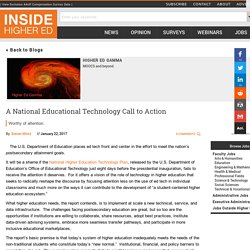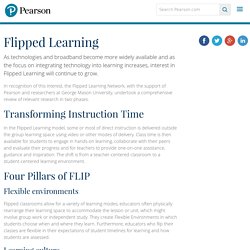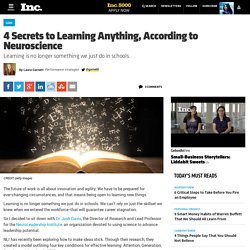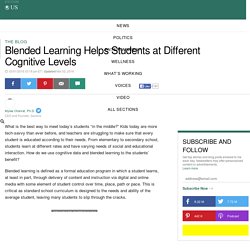

10 Ways Edtech Tools Can Facilitate the Teaching and Learning Process - The Tech Edvocate. A National Educational Technology Call to Action. The U.S.

Department of Education places ed tech front and center in the effort to meet the nation’s postsecondary attainment goals. It will be a shame if the National Higher Education Technology Plan, released by the U.S. Department of Education’s Office of Educational Technology just eight days before the presidential inauguration, fails to receive the attention it deserves. For it offers a vision of the role of technology in higher education that seeks to radically reshape the discourse by focusing attention less on the use of ed tech in individual classrooms and much more on the ways it can contribute to the development of “a student-centered higher education ecosystem.” What higher education needs, the report contends, is to implement at scale a new technical, service, and data infrastructure. The report’s basic premise is that today’s system of higher education inadequately meets the needs of the non-traditional students who constitute today’s “new normal.” 1. 2. 3. 4.
Educational Technologies and Concepts that Every Teacher Should Know: Part V – The Tech Edvocate. During this five-part series, I’ve been talking about education technologies and concepts that every teacher should know about. Today I’m going to wrap up the series with several additional technologies and concepts. Student-led planning. When special education students reach high school, they are being called upon more and more to have input into their individual learning plans. How EdTech can Increase Student Engagement – The Tech Edvocate. Virtual Science Labs: Get More with Fewer Resources – The Tech Edvocate. Flipped Learning. As technologies and broadband become more widely available and as the focus on integrating technology into learning increases, interest in Flipped Learning will continue to grow.

In recognition of this interest, the Flipped Learning Network, with the support of Pearson and researchers at George Mason University, undertook a comprehensive review of relevant research in two phases. Transforming Instruction Time In the Flipped Learning model, some or most of direct instruction is delivered outside the group learning space using video or other modes of delivery.
Class time is then available for students to engage in hands-on learning, collaborate with their peers and evaluate their progress and for teachers to provide one-on-one assistance, guidance and inspiration. The shift is from a teacher-centered classroom to a student-centered learning environment. Four Pillars of FLIP Flexible environments.
4 Secrets to Learning Anything, According to Neuroscience. The future of work is all about innovation and agility.

We have to be prepared for ever-changing circumstances, and that means being open to learning new things. Learning is no longer something we just do in schools. We can't rely on just the skillset we knew when we entered the workforce--that will guarantee career stagnation. So I decided to sit down with Dr. Josh Davis, the Director of Research and Lead Professor for the NeuroLeadership Institute, an organization devoted to using science to advance leadership potential.
NLI has recently been exploring how to make ideas stick. Here's a quick overview of the AGES model: Attention: When you learn, maintain a single focus having complete and undivided attention. Generation: Listening isn't enough. Emotion: Strong emotions lead to strong memories. Spacing: In order to grow memory, you need a break in between learning.
Laura: Why is the AGES model so important at this time? Josh: Say you're trying to get someone up to speed quickly. Educational research summarised: New vision for education. ‘New Vision for Education: Fostering Social and Emotional Learning through Technology’ published by the World Economic Forum The World Economic Forum, in collaboration with the Boston Consulting Group, have just published this report as a follow up to their 2015 report ‘New Vision for Education: Unlocking the Potential of Technology.’

It positions technology as a support to social and emotional learning (in England, this falls under the title PSHE – personal, social, health and emotional.) The premise for the report is that in order to “thrive in the 21st century, students need more than traditional academic learning”. This is where skills like the 4Cs (communication, collaboration, creativity and critical thinking skills) are so important and it is these, they suggest, that are developed through social and emotional learning. The 2015 report defined 16 ‘crucial proficiencies’ required to prepare students for life beyond school.
Blended Learning Helps Students at Different Cognitive Levels. What is the best way to meet today’s students “in the middle?”

Kids today are more tech-savvy than ever before, and teachers are struggling to make sure that every student is educated according to their needs. From elementary to secondary school, students learn at different rates and have varying needs of social and educational interaction. How do we use cognitive data and blended learning to the students’ benefit? Blended learning is defined as a formal education program in which a student learns, at least in part, through delivery of content and instruction via digital and online media with some element of student control over time, place, path or pace.
Student Oriented. Classrooms/Teaching.